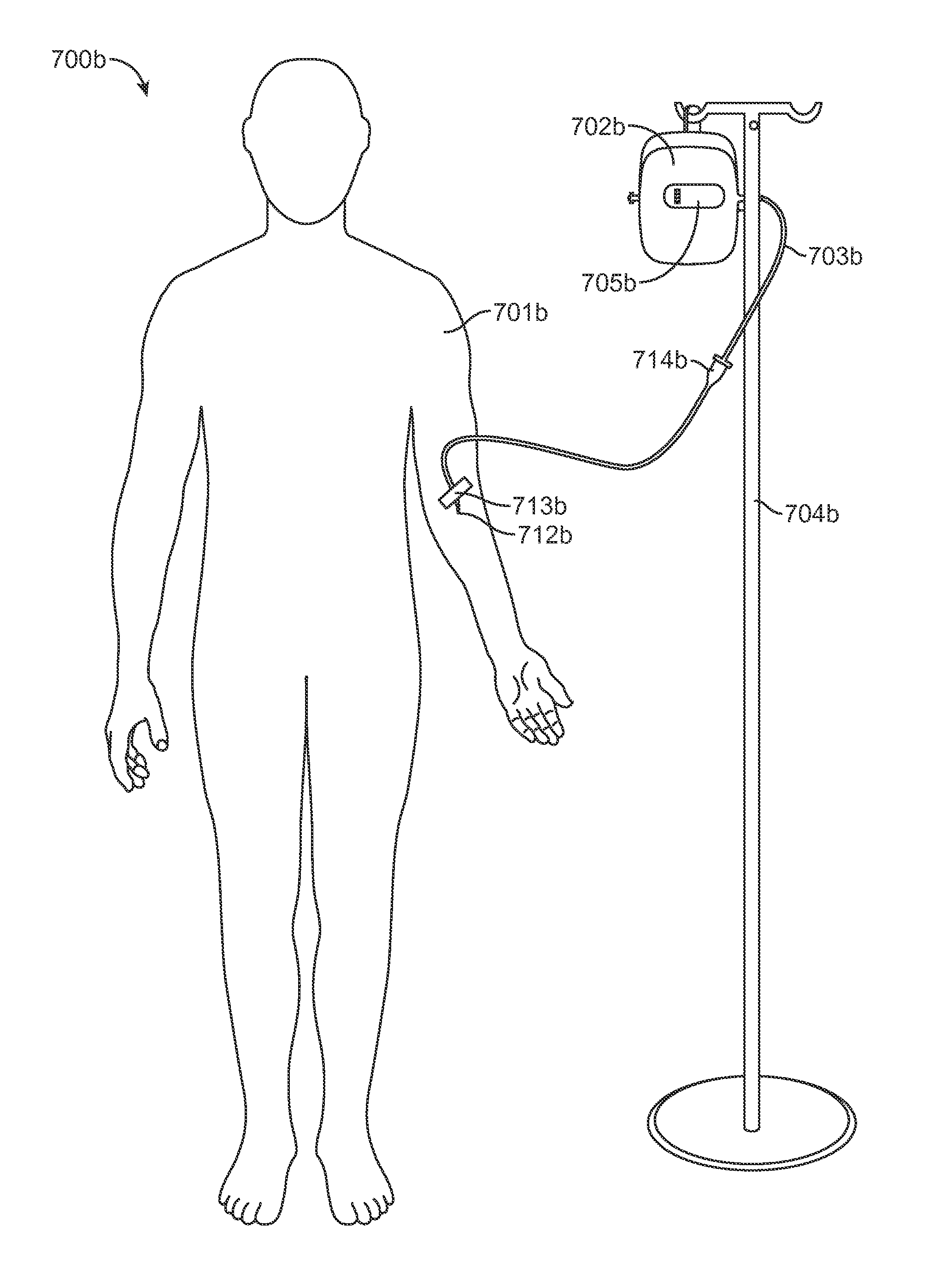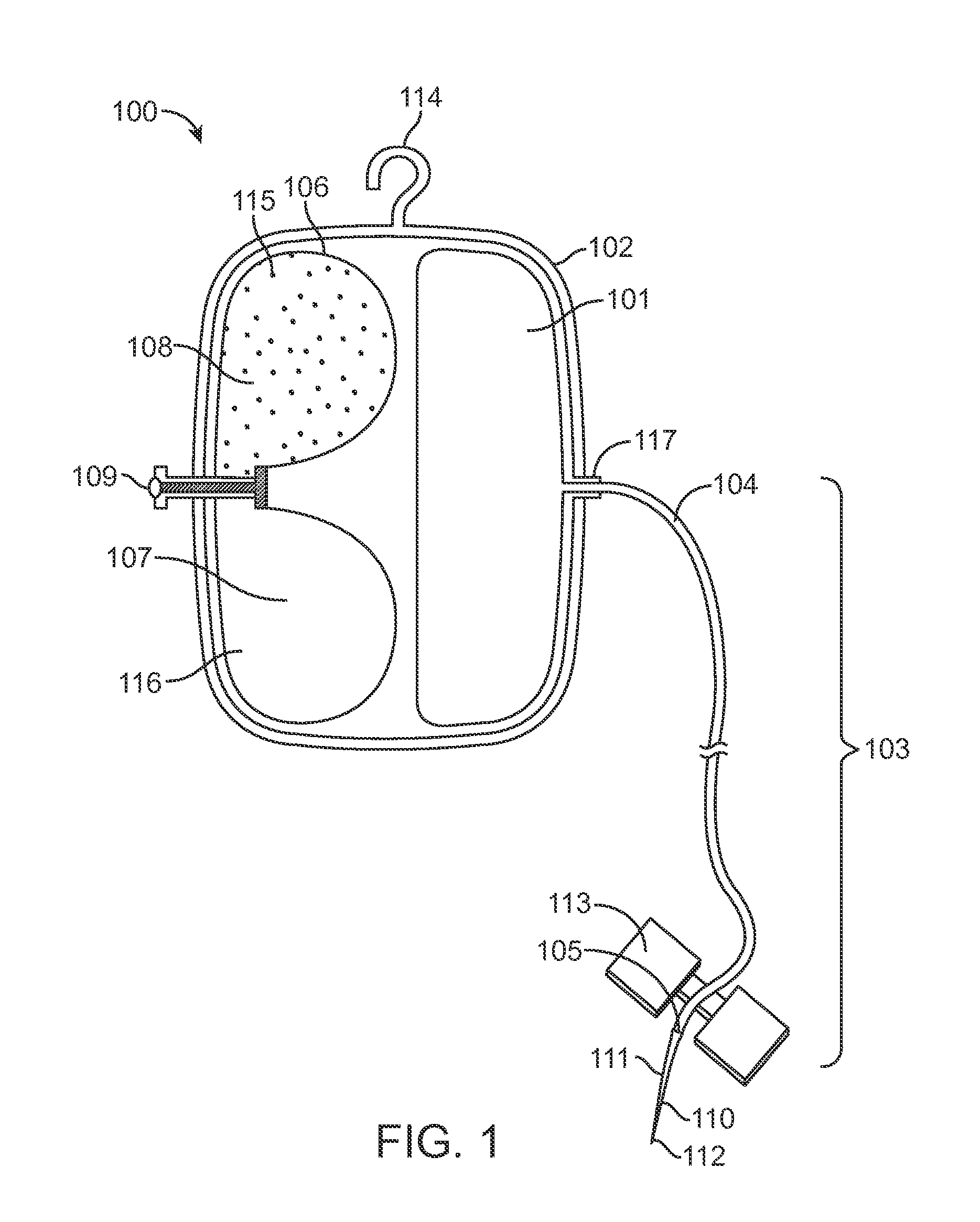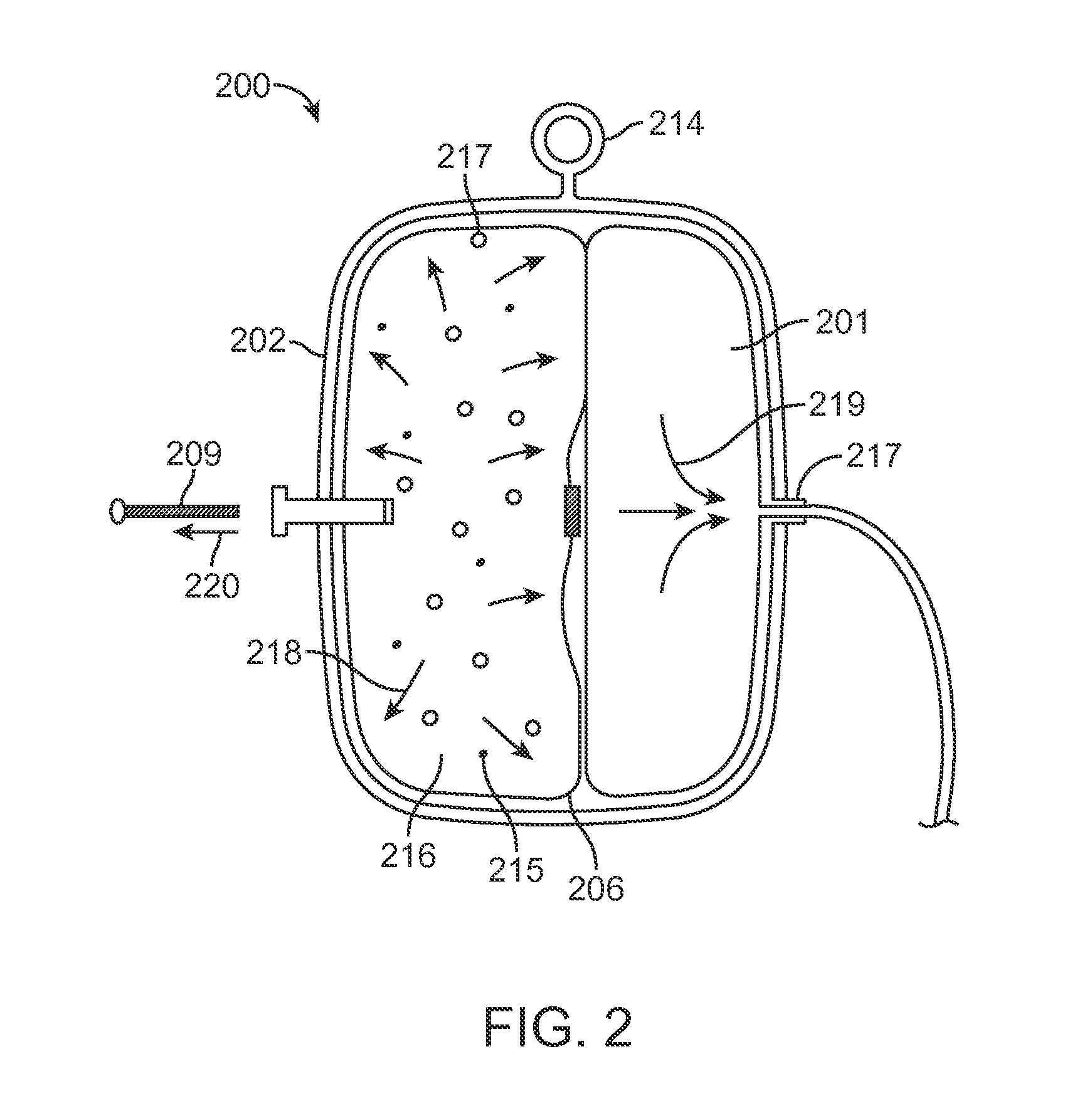Infusion System for the Controlled Delivery of Therapeutic Agents
a technology of therapeutic agents and infusion systems, which is applied in the direction of process and machine control, instruments, other medical devices, etc., can solve the problems of high risk of overdose, inappropriate iv therapy remains a significant problem, and prolong the shelf life of key components
- Summary
- Abstract
- Description
- Claims
- Application Information
AI Technical Summary
Benefits of technology
Problems solved by technology
Method used
Image
Examples
Embodiment Construction
[0030]Various embodiments of the invention provide infusion systems that deliver therapeutic agents using a chemical reaction to predictably drive a flow of therapeutic agent through a flow path and into a patient. Certain embodiments utilize an acid-base reaction or any other reaction that produces a gaseous substance. The gas is produced and contained in an expandable drive balloon when the acid-base reactants are combined with a liquid. As the gas is produced, the drive balloon expands to exert pressure on a separately-contained drug reservoir which, in turn, pushes the drug from the reservoir into the flow path where the drug is ultimately delivered to the patient at a flow rate within a pre-determined range.
[0031]FIG. 1 is a perspective view of a system according to one embodiment of the invention. Non-limiting, exemplary system claims are described further below. The particular system 100 of FIG. 1 includes a housing 102 with reservoir 101 and an expandable drive balloon 106 c...
PUM
| Property | Measurement | Unit |
|---|---|---|
| Flow rate | aaaaa | aaaaa |
| Flow rate | aaaaa | aaaaa |
| Flow rate | aaaaa | aaaaa |
Abstract
Description
Claims
Application Information
 Login to View More
Login to View More - R&D
- Intellectual Property
- Life Sciences
- Materials
- Tech Scout
- Unparalleled Data Quality
- Higher Quality Content
- 60% Fewer Hallucinations
Browse by: Latest US Patents, China's latest patents, Technical Efficacy Thesaurus, Application Domain, Technology Topic, Popular Technical Reports.
© 2025 PatSnap. All rights reserved.Legal|Privacy policy|Modern Slavery Act Transparency Statement|Sitemap|About US| Contact US: help@patsnap.com



